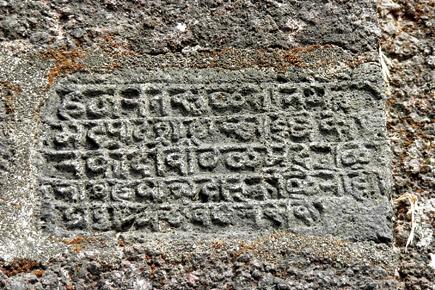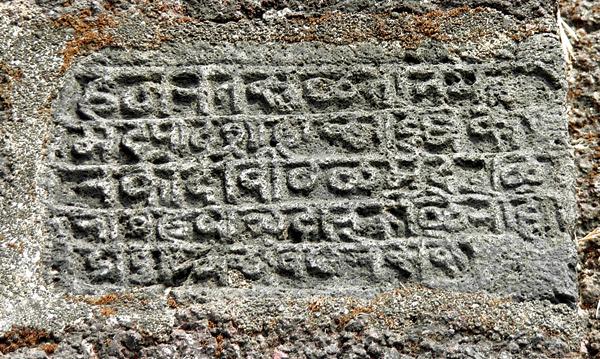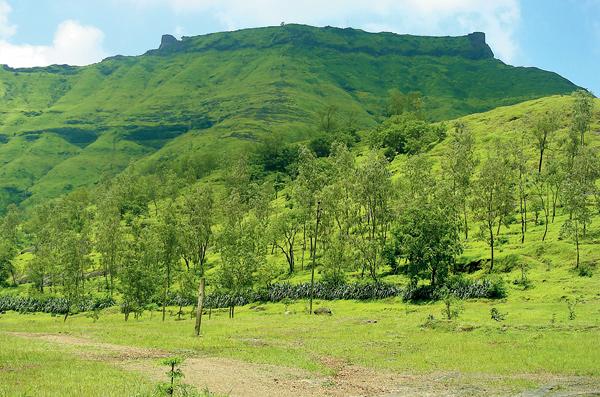If you are looking for a quick break outside the city, head to Fort Rohida (or Vichitragad as it is called in Marathi) which is located 65 km away from Pune

The Shilalekh inscription at the fort
Fort Rohida or Vichitragad as it is called in Marathi is located 65 km away from Pune on the Pune–Satara Highway near Bhor. The fort was re-developed during the rule of Adilshah of Bijapur before the birth of Chhatrapati Shivaji. The word Rohida is derived from the Persian language.

The Shilalekh inscription at the fort
Many years later, Chhatrapati Shivaji created a department called Rajvyawahar Kosh (administrative department) whose major task was to change Farsi names to Devnagari. However, the exact reason why the fort was renamed as “Vichitragad” is still not known.
ADVERTISEMENT

Rohida Fort is located at a height of 1,116m (3,661 ft)
The fort boasts of a grinding mill which was used to create a mix of limestone and stone crush which was used to restructure of the fort during Shivaji’s era.
The fort has three doors to enter, of which two face the north and one faces the east. The doors have carvings of tigers and elephants along with two shilalekhs or inscriptions in Devnagari and Farsi languages.

The lake on the fort
There is a water tank named Andhartale, which is roughly 50 metres from the third gate. The fort also includes a temple called Rohid Mal which was recently reconstructed and has a portion where people can stay.
You can start from the gate 3, and walk along the borders (Tatbandi) to spot the big water tanks, Chor Darvaja, Buruj (bastion) on the north east face and the Chuna grinding wheel.
The fort has four Buruj (bastions), namely Fateh Buruj, Sarja Buruj, Waghjai Buruj and Damgude Buruj. Sarja Buruj includes a Chor Darvaja or a secret passage to come down from the fort in case of emergency or during war through a shortest possible route.
At the centre of the fort, there are 10 small and medium-sized water lakes out of which one has potable drinking water. The fort has a Sadar or a place where daily administrative tasks were conducted during those times.
This fort was built at a strategic location near Bhor from where the entire area, then termed Hirdas Maval, could be kept under vigilance.
The Kari village near the fort is the village of Kanhoji Angre who was a Sardar in Shahaji’s (Shivaji’s father) army and was also part of Chhatrapati Shivaji’s army thereafter.
This was one of the 23 forts which were surrendered by Chhatrapati Shivaji to Siddi Johar when he lost the battle on Fort Purandar.
 Subscribe today by clicking the link and stay updated with the latest news!" Click here!
Subscribe today by clicking the link and stay updated with the latest news!" Click here!







